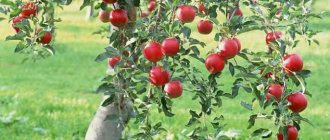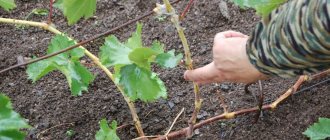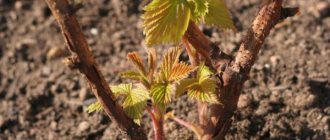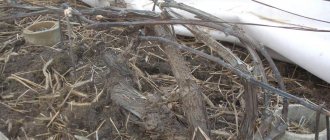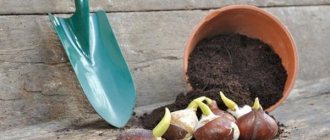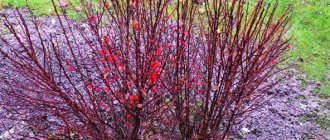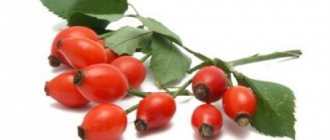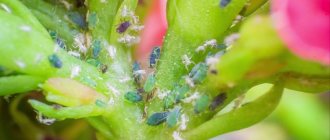Features of the climate of Siberia
In Western Siberia the climate is sharply continental, and the weather conditions in the eastern part of Siberia are influenced by the relief features. Winters in the macroregion are long and frosty, and summers are short. But such conditions also have advantages for gardening. The grapes are resistant to pests and are not susceptible to diseases. In Siberian conditions, it is not affected by the dangerous phylloxera aphid.
Despite the climate, early and some mid-season varieties grow successfully and produce a harvest, provided that the vine is covered and protected from freezing.
Timing for covering grape bushes in Siberia
Siberian autumn takes a short period of time, no more than two months, and quickly turns into a harsh, long winter. For this reason, they begin to cover the grapes at the end of September - beginning of October in order to catch them before the first frost. But there's no need to rush.
You can remove the vine from the trellis earlier, but it is better to wait until the leaves fall and do not pick them off yourself. At this time, complex biochemical processes take place in the vine for the complete ripening of shoots and buds.
At what temperature should you cover grapes?
There is no need to wrap the entire bush at once. Temperature changes can cause condensation to form and dampen the plant. A period is needed when the fluctuations in sub-zero temperatures pass - before the snow falls. It is useful to harden the plant at -5...-8°C. Finally, the grapes can be covered at a constant temperature below -10°C.
Reference. In Siberia, the covering of grapes is completed by mid-October.
Time and temperature
After the preparatory work, they begin to harden the grapes. To do this, the grapevine is lowered into trenches dug in the ground, but not covered at night, waiting for the night air temperature to drop below - 10 degrees Celsius. As soon as this happens, they begin to cover the vine at night, opening it during the day, provided that the daytime air temperature rises above 0 degrees Celsius, the sun is shining or there is high humidity.
The time of shelter depends on the region and even on the specific place where the grapes grow. Most often, it is in Siberia that the vines are covered already in early October, but if it is a warm and hot autumn, then it is worth waiting for protection from the cold.
How to prepare grapes for shelter in Siberia
Preparing the bush for winter begins in September immediately after harvesting. It includes pruning, watering, fertilizing. The growth of the vine and next year’s harvest depend on how the plant overwinters.
Trimming
Pruning makes it easier to cover the vines. The best time for the procedure is mid-September, but at least 1-2 weeks after harvest, so that the plant has time to recover. If by that time the bush has not dropped its leaves, they are shaken off by hand. If you prune before leaf fall, the vine will lose its plasticity. Such branches will break when placed in a trench.
Trim the vine down to living wood - its cut should be light green. 1-2 cm of shoot are left above the living bud. After pruning, a certain number of buds should remain on each fruit branch, depending on the thickness of the shoot:
- 5 mm - 5 pcs.;
- 6 mm - 5-6 pcs.;
- 7 mm - 7-8 pcs.;
- 8 mm - 8-9 pcs.;
- 9 mm - 9-11 pcs.;
- 10 mm - 11-13 pcs.;
- 11 mm - 12-14 pcs.;
- 12 mm - 13-15 pcs.
30% of spare eyes are left on the plant in case of freezing.
Important! Fruit-bearing shoots are shortened by 60-90%.
Watering
The frequency and abundance of moisture depends on the composition of the soil. Sandy substrate requires frequent but moderate watering. Clay soil is watered rarely and abundantly. After harvesting, watering can be stopped for a while. This imitation of drought will accelerate the ripening and lignification of the vine, and the grapes will overwinter better.
Moisture-recharging irrigation is carried out at the end of September, on the last sunny days. After it, the lashes will be saturated with moisture, become flexible, and will be easy to bend to the ground. For fruit-bearing plants, the norm is 100-150 liters per 1 square meter. m landings.
Top dressing
During the growing season, the plant uses up its entire supply of nutrients. To set the buds of the future harvest, it is necessary to fertilize it:
- Spill the soil with a solution of phosphorus and potassium fertilizers (20 g and 10 g per 10 liters of water).
- Once every three years, the following composition is applied to the bush: 1 kg of chernozem, 30 g of superphosphate, 30 g of potassium fertilizer.
- You can add boric acid, potassium permanganate, iodine and zinc sulfate to water for irrigation, but not more than 15 g of each substance per 10 liters of water.
Before winter, grapes should not be fed with nitrogen-containing mineral compounds, which cause rapid growth of green mass.
Treatment against diseases and pests
Fungal spores found on bark and foliage survive at sub-zero temperatures. To prevent their re-spread, it is necessary to carry out preventive spraying with 1% copper sulfate. In the fight against oidium and mites, the drugs “Nitrophen” and “DNOC” are suitable.
Subtleties of care
Siberian grapevine varieties must undergo comprehensive preparation for cold weather. It consists of limited nutrition and minimal watering so that the plant can adapt to harsh conditions. Otherwise, the local climate will be disastrous for the grapes.
Proper care of fruit varieties includes the following steps:
- Formative procedures and control of fruit load.
- Application of foliar and soil fertilizers.
- Pruning activities, pinching.
- Protective work.
- Shelter for the winter.
Fact!
In most cases, Siberian grapes are cultivated in a standardless fan form. The fact is that in this state it is easier to care for it, because the gardener only needs to fold it in front of the shelter.
All other vegetation processes occur naturally. At the age of up to three years, the seedling does not need additional feeding, because the fertilizers that were added to the pit during its preparation are enough for it. Often this is a large dose of humus. From the fourth year of life, an additional bucket of humus or manure is placed under the bush.
Feeding work is carried out no more than once a day. It is important not to overfeed the vine, otherwise it will get used to such a feast and will no longer cope with a prolonged hunger strike. In mid-spring or early May, about 10 kg of fresh manure is poured under each bush. Fertilizer is supplied directly under the vine, without digging into the ground. In this case, you need to make sure that it does not get on the roots.
To stimulate the development of powerful immunity that can withstand severe frosts, foliar fertilizers must be applied to the grape bushes. Before the beginning of the flowering season, the bush is treated with a solution of boric acid, and upon completion - with zinc sulfate. Also, Kemira and magnesium sulfate can be used as a good foliar feeding.
Disinfection of covering material
Non-woven material does not need to be disinfected. But it’s better to process the natural one:
- Dry leaves. It is raked around the trunk and treated with fungicides (Maxim, Oksikhom, Fundazol) or Bordeaux mixture against spores of pathogenic fungi.
- Straw. Herbs are added to it to repel rodents. This is wormwood, marigold, tansy.
- Spruce branches themselves have disinfecting properties.
- Wooden flooring, mats, straw mats are treated with a solution of copper sulfate in a proportion of 10 g per 1 liter of water.
Young plant
In the harsh conditions of Siberia, two methods of covering grapes are usually practiced. The first method, or as it is also called “dry”, allows you to create comfortable conditions for the plant. The vine is tied and wrapped in polyethylene or roofing felt. So, it will not touch the ground. After this, metal brackets are used to secure the vine to the bottom of the trench.
Arcs are installed above it, special cardboard is fastened on top of them and then covered with polyethylene. This will further protect the plants from moisture. Cardboard can be replaced with wooden boards. The second method does not require the use of prepared materials. Regular soil and snow will help cover the plants.
A solution of lime, which is applied to the grape bushes before sheltering, will help to avoid diaper rash on the plant during wintering.
Open the grapes immediately. This should happen gradually. After the temperature becomes stable and the snow begins to melt.
In order to remove the insulation from grapes, do the following:
- As soon as the snow melts, it is necessary to remove the waterproofing, that is, polyethylene.
- It is possible to completely remove the cover from the plant only in the second half of April. Then you can remove the most basic structure and free the vines.
- It needs to be dried and ventilated. It is important to remember that you should never tie it.
- After the stems have dried, they are untied and laid down. It is also not recommended to tie them. If frost occurs at night, the plants need to be covered again.
It is important to be very careful and it is advisable to do this in cloudy weather. Since bright sunlight can damage the plant.
Young grapes are usually covered with 5-liter plastic bottles. Having previously made a cut on them for ventilation. After this, you need to fill it with earth up to these cuts. After the temperature reaches negative values, the bottle is completely covered with soil, 5-10 cm above it.
Caring for grapes is easy. With proper care and preparation for wintering, the plant will only say thank you and will delight you with a good harvest in the fall. You can make the covering material yourself, or you can buy a ready-made product. Have a good harvest!
There are no special requirements for covering material for grapes, however, when choosing a cover, it is worth excluding the possibility of moisture appearing on the vine, due to which it subsequently freezes. If you are going to use polyethylene or other similar fiber, make sure it has holes for filtering.
In addition, an important feature is the strength of the selected product, so if you focus on plastic film, then choose only dense varieties that can retain their qualities for several years.
Sometimes old metal sheets, slate and even used plastic bottles are used to cover the vine, which, after soldering, turn into a good above-ground frame.
Important! In addition to protection from the cold, grape bushes also need to be protected from rodents, so it is better not to use sawdust and hay to insulate the shoots to prevent mice from infesting them.
From ready-made products, agrofibre can be purchased to cover grapes, although some gardeners prefer to use it only in spring, when there is a risk of light return frosts. In winter, such material often allows moisture to pass through, so in addition to it you will have to use an intermediate layer that provides more reliable shelter.
There are many methods for covering grapes in the Siberian regions, because every gardener chooses the option that will be the most accessible and simple for him. Here are some popular examples of constructing a protective layer:
- Option 1. After removing the shoots from the supports, they are cut off and laid on sawdust or boards, additionally covering them with spruce branches on top. It retains snow well, but for additional insulation it is advisable to use a layer of covering material (for example, you can wrap the vine in front of it with polyethylene or roofing felt). To prevent the vine from rising from the surface of the ground, it is attached to it with special metal brackets or wooden hooks.
- Option 2. It is used more often than the previous one, since it does not require practically any special materials from the winegrower to cover the bushes. To protect them from the frosty winter, mainly only soil and snow are used, under which the grapes are well preserved even in the harshest winters. In this case, the vines are tied into bundles and placed in specially dug trenches, which are then covered with soil to a height of about 30 cm from the surface of the earth. When snow falls, the layer of cover will become even larger, which will further insulate the branches.
- Option 3. Sometimes fallen leaves are used as a covering material. It is poured in a thick layer (at least 30–35 cm) on top of grape shoots fixed close to the ground, and a film is pulled on top. To prevent fallen snow from sliding on it, you can also lay a layer of raspberry stems or dried sunflower tops on top. After snow falls, it must be covered with a layer of at least 50–60 cm.
We invite you to familiarize yourself with: The best elite grape varieties for central Russia with photos and descriptions
In the spring, as the snow melts, the insulating structure can be dismantled. In the first days of a steady thaw, the snow-retaining devices are removed, and after the snow has completely melted, the waterproofing layer can also be removed. The main shelter is removed only at the end of the second half of April, after which the vine can be lifted from the trench and hung on supports for further ventilation.
Important! After removing the vine from the supports, you need to bend it towards the ground very carefully, without sudden movements. Even if the cracks are not visible externally, individual fibers inside may break, which will harm the further development of the grapes.
It will be possible to finally open the grapes and secure them again on the supports no earlier than the middle or even the end of May. In general, caring for vineyards in harsh climates involves performing the same actions as when growing in the rest of Russia, albeit with a slight shift in the usual timing.
The opening of the grapes in the spring is carried out gradually as the snow melts. At the very beginning of the thaw, snow retention devices are removed. When the vineyard is completely free of snow cover, it is already possible to remove the waterproofing.
The main covering materials are removed only in the third ten days of April, and the vine is lifted from the trench and hung to dry on the bottom row of the trellis.
After the vine has completely dried, it is freed from the bunches and laid out in a trench, if necessary, immediately protected from the frequent night frosts during this period, which are destructive for shoots that have just begun to develop.
The grapes are finally opened only when the threat of frost has completely disappeared, carefully tying the vines with tender shoots to the trellises.
All manipulations for the final opening of the grapes must be carried out only in cloudy weather or in the evening in order to protect the still weakened plants from drying out in the active spring sun.
Grape bushes planted this year are not pruned. Only non-fallen leaves are removed from them. The bushes are watered; there is no need to apply fertilizers - they are applied during planting. Grapes of the second year of life are pruned, leaving 3-4 buds on one or two shoots. In the next two years, from 3 to 7 buds are left on the bush in the fall on mature shoots. Starting from the 4th year of life, fertilizers begin to be applied in the fall.
Covering methods
How to cover grapes for the winter in Siberia? There are many types of shelter. Each gardener decides for himself which method to use. Slate, cardboard, natural materials, and snow are used for shelter.
The influence of climate on the choice of method
In regions with a changeable climate, where winter is accompanied by thaws and rains, air-dry shelters are made for grapes. Guaranteed protection against freezing, getting wet and icing is provided by the tunnel method. In regions where there is little snow, it will not be possible to use a shelter made of snow and earth.
Near-standard instillation
This type of shelter is used for young plants. A vine older than a year cannot be covered in this way. The branches of the vine are fastened together and bent. The standard is buried in a layer of earth 20-25 cm high.
Half cover
This method is used for frost-resistant varieties in the harsh conditions of Siberia.
Procedure:
- Remove the vine from the support.
- Lay on the ground.
- Cover with agrofibre.
Full Cover
Used for young plants and regions where winter temperatures drop to -20°C. They use earth and snow for protection.
Snow
Snow acts as a natural insulator that protects bushes from freezing. The vine is bent to the ground, the hole is covered with earth, and then covered with snow. Every centimeter of snow provides one degree of heat to the plant.
Earth
The oldest and most reliable method. A trench is dug along the row using a shovel, tied vines are placed and covered with an earthen mound 15-20 cm high.
This method has a drawback: the plant can sap, since there are no vents.
Straw or reed
This method refers to the trench method. Dig a trench along the plantings, lay the vines tied in a bunch, and cover the top with straw or reeds.
The method is not very suitable for winter shelter in Siberia, as it may attract mice.
Leafy
The foliage is collected around the bush and placed on top of the vine, 30-35 cm thick, thereby protecting the roots from freezing. But first it must be treated with fungicides, for example, “Fundazol”, “Oxychom” or Bordeaux mixture. A film is stretched over the layer of leaves.
Needles
This is not the best insulation. The needles get wet, freeze, preventing the vine from breathing, and provide poor insulation.
Other materials
Instead of pine litter, it is better to use spruce branches. Coniferous branches allow air to pass through well, disinfect and repel rodents.
Sawdust is also used, but it must be covered with film. This is not a very good option, as the material attracts mice.
Important! Calcium carbide is placed under winter shelters, which repels rodents.
Dry shelter
The safest and most common way. The vine is also bent to the ground, but it is laid on non-woven material or any dry organic matter. This allows the vine to not come into contact with the ground and remain dry. The insulation is pulled over the top, leaving an air gap between the plant and the shelter.
Slate
Slate prevents precipitation from entering the vineyard. A film or agrofibre is laid under the vine and insulated with spruce branches on top. The entire structure is covered with slate.
Film
The material is pulled over metal arcs. It turns out to be a low greenhouse. Cardboard or planks covered with spruce branches or straw are laid under the vine.
Ruberoid
Roofing material is used in the same way as film, or combined with wooden panels. Wooden shields are installed over the laid grapes and covered with roofing felt on top. The design resembles a gable roof of a house. Secure with sprinkled earth.
Boxes
The boxes are used in the same way as roofing felt, or they are attached to metal arches, like a film.
Other materials
You can use polystyrene foam. The bush is insulated with pine needles, covered with pieces of foam plastic and wrapped in polyethylene. In the spring, the polystyrene foam is removed, and the pine needles are left as mulch.
You can wrap adult plants with several layers of agrofibre and secure with twine. A layer of snow is well retained on its surface.
Which method is preferable in Siberia
In Siberia, they prefer the dry method of covering using available materials. Dig a trench or install greenhouses. When preparing for winter, much attention is paid to the root system. The trunk circle is covered with spruce branches.
Sheltering annual grapes for the winter. Do I need to cover young grapes for the winter?
Experienced winegrowers advise making shelter for the winter in any case - with the exception of those climatic zones where there are no negative temperatures in winter. The harsher the winter, the more carefully you need to prepare winter shelter for young grapes. In order to maximize the safety of a vineyard with young seedlings in the cold, you need to take care of creating a reliable complete shelter that will protect the entire queen cell.
The most dangerous thing that can happen to a vine is icing. Only shelter can save you from it. Do not be afraid that the frosts will be much weaker than predicted, and a well-sheltered plant will end up in greenhouse conditions (which is fraught with premature bud break).
The design of the created shelter assumes the possibility of artificial ventilation, when from the cocoon created by blankets, films and other things, with the threat of creating a greenhouse effect during warming, outside air with a sub-zero or cool temperature is brought in, and warm air is released. This procedure will avoid rotting and the appearance of early buds.
If the climate of the region allows the grapes to enter winter without shelter or with minimal protection, but frost suddenly strikes, there are methods that could correctly be called anti-crisis. The first is to carefully bend the vines to the surface of the soil, fix them with staples and pour a sufficient layer of soil on top of the plant. You should get a tent-like formation along the entire length of the vine. If the temperature suddenly drops to a critical level and such an earthen tent cannot fully protect the young grapes, it is recommended to save the vines at night with the help of fires that are lit next to the bushes. This measure can only be applied to the southern regions, where frosts are rare, and if they do occur, they last no more than 1-2 days.
Proper construction of the shelter, taking into account the climatic characteristics of the area, will allow the grapes not to freeze in the most severe frosts and, after the onset of spring, to begin a full entry into the new fertile season.
Common Mistakes
Failure to comply with the deadlines and technology for preparing for winter can destroy the grapes:
- Early cover . The vine needs to be given time to harden, so it will better survive the winter. First, make a temporary shelter, and when a stable temperature is below -10°C, you can wrap the bushes.
- Contact with the ground. In Siberia, it is better to use the dry method, when a layer of spruce branches, leaves or non-woven material is laid under the laid vine. This way the vine has a better chance of not resisting.
- Hasty release from protection in the spring. Don't rush to get rid of the covering material. Return frosts are dangerous for young buds. Release the grapes when the snow has completely melted and the temperature has reached above zero.
Pruning activities
As August approaches, the natural growth processes in the vine branches begin to slow down. Also at this time, its top fully expands, which indicates the need to trim young shoots that cannot be fully formed before the arrival of cold weather. During autumn pruning, you should get rid of tops and stepsons.
Autumn pruning of grapes is carried out using the Guyot method, which involves the formation of a squat trunk and short sleeves. The number of the latter depends on the varietal characteristics. A powerful bush should have no more than 4-8 sleeves, and a medium-sized bush should have no more than two.
Pruning work should begin after the first serious frost. It is also important to do this no later than two weeks after the leaves fall.
The procedure itself is conditionally divided into two stages. First of all, it is necessary to get rid of fruiting and unripe sleeves, stepsons and other shoots. When pruning a young bush, no more than three healthy shoots should be left, for six-year-olds - 4 sleeves, and for 7-year-olds and older - from 6 sleeves.
The next stage is the formation of the fruit vine (arrows). To do this, you need to leave one arrow on the sleeve and cut it into 4 buds. In this case, the stepsons are shortened to one bud.
If the sleeve has formed on an old tree and strong fruit shoots have sprung up from it, you can leave no more than two arrows. When performing pruning, you should adhere to the following principles: arrows can grow from different buds and be at different levels in relation to the root system.
Pruning work in the autumn involves removing unripe vines with a white center, which can be seen when cutting the vine. Branches with green centers are mature and prepared for winter.
Siberian grapevine varieties are characterized by excellent resistance to all kinds of viruses and diseases. This is explained by a simple fact - most infections are not able to survive in severe frosts. There is simply no need to use toxic drugs and chemicals to protect against diseases. Therefore, the fruits of the northern vine are also famous for their complete environmental purity.

